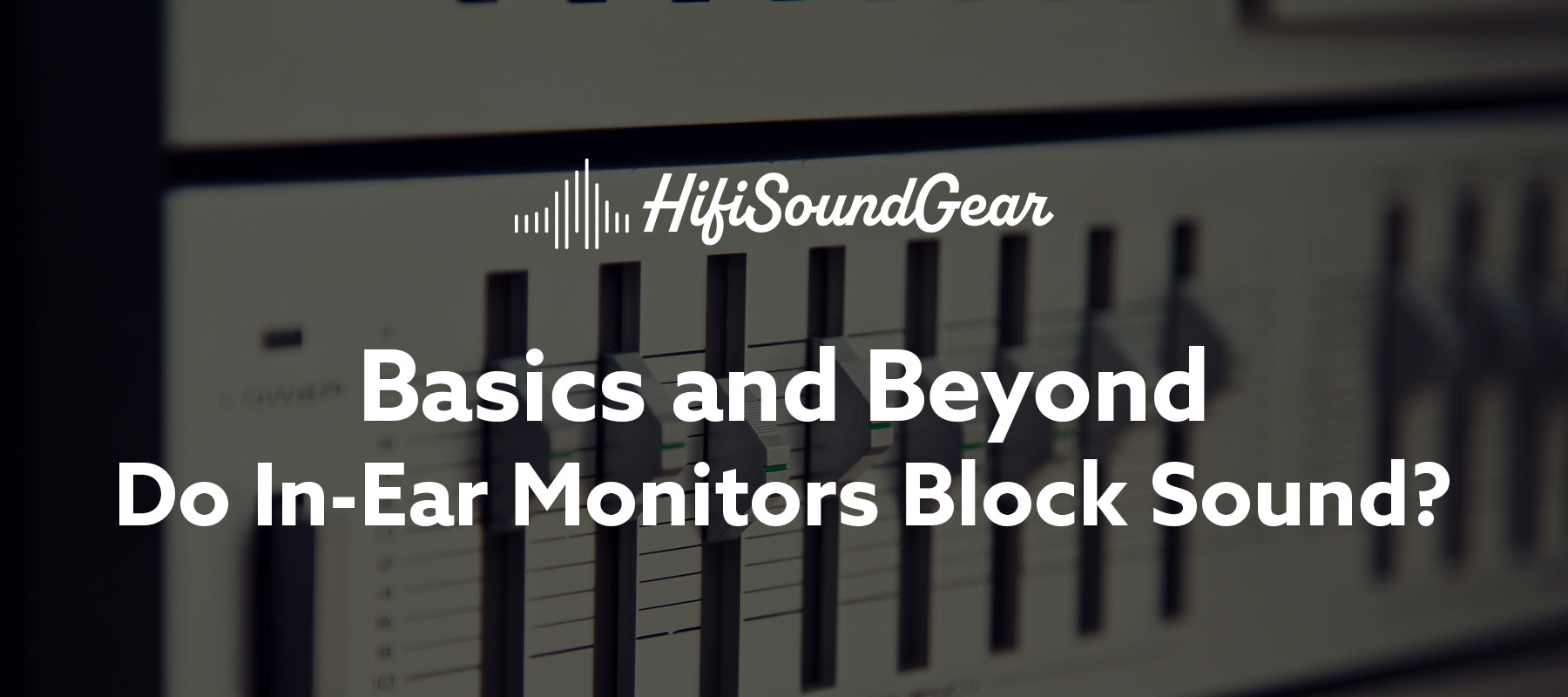
Do In-Ear Monitors Block Sound?
Do in-ear monitors actually block out external sound? The short answer is yes - but how well they block sound depends on several crucial factors. Learn how in-ear monitors work and how they block sound in this quick guide.
What Are In-Ear Monitors?

In-ear monitors are specialized earphones designed to deliver high-quality audio directly into your ear canal while simultaneously blocking external noise. Unlike regular earbuds that sit loosely in your outer ear, IEMs create a tight seal within the ear canal itself. This seal serves dual purposes: it keeps your audio in and unwanted noise out.
Professional musicians originally adopted IEMs to replace bulky stage monitors, allowing them to hear their mix clearly without cranking up the volume to dangerous levels. Today, they're also popular among audiophiles and commuters who want superior sound quality with excellent isolation.
The Science Behind IEM Noise Isolation

IEMs primarily use passive noise isolation—a simple yet effective physical barrier that blocks sound waves from entering your ear canal. When you insert an IEM with the proper ear tip, it creates an airtight seal that prevents external sounds from reaching your eardrum.
The effectiveness depends heavily on three factors: the quality of the seal, the ear tip material, and the IEM's design. Foam ear tips typically provide better isolation than silicone because they expand to fill your unique ear canal shape. Quality IEMs can reduce ambient noise by 20-40 decibels, which is comparable to wearing industrial ear protection!
Some modern IEMs also include active noise cancellation (ANC) technology, which uses microphones and electronic processing to further reduce external sounds. However, many audio professionals prefer passive isolation alone because it doesn't require batteries and won't affect sound quality.
How Much Sound Do IEMs Actually Block?
The noise reduction you'll experience varies significantly. Entry-level IEMs with basic silicone tips might block 15-20 decibels, which is enough to reduce conversational chatter. Mid-range models with foam tips can achieve 25-35 decibels of isolation—perfect for subway commutes or airplane travel.
Professional-grade custom-molded IEMs offer the gold standard, blocking up to 40 decibels of external noise. These are created from impressions of your ears and provide a perfect seal every time. Musicians performing in loud venues absolutely need this level of protection!
It's worth noting that IEMs block higher frequencies (like voices and cymbals) more effectively than low-frequency rumble (like bass guitars or traffic noise). Still, the overall reduction is impressive across the spectrum.
The Importance of Proper Fit

Here's the truth: even the most expensive IEMs won't block sound effectively if they don't fit properly. Achieving that crucial airtight seal is everything! Most IEMs come with multiple ear tip sizes—try them all. The right fit should feel snug but comfortable, with no air gaps.
A simple test: play music at a moderate volume and gently press the IEM deeper into your ear. If the bass suddenly increases or external noise decreases noticeably, your seal wasn't optimal. Experiment with different tip sizes and materials until you find the perfect match.
Custom-molded IEMs eliminate this guessing game entirely. They're created specifically for your ears, guaranteeing maximum isolation every time. While they're pricier (typically $400-$2000+), professional musicians consider them essential investments for hearing protection.
Do Musicians Really Need Sound-Blocking IEMs?
Absolutely! Prolonged exposure to loud stage volumes causes permanent hearing damage, and tinnitus is incredibly common among musicians. IEMs solve this problem by blocking external noise and allowing performers to hear their mix clearly at safe listening levels.
Traditional stage monitors required high volumes to compete with drums, guitars, and crowd noise. IEMs provide that clarity without the volume war, protecting your hearing while improving performance quality. It's a win-win situation that's become industry standard for touring professionals.
Maximizing Your IEM's Sound Blocking
Want the best possible isolation? Start by cleaning your ear tips regularly—ear wax reduces seal quality. Replace foam tips every few months as they compress over time. Experiment with insertion depth and angle; proper technique makes a huge difference.
For maximum blocking, consider switching to memory foam tips like Comply or similar brands. They provide superior isolation compared to standard silicone. Some users even combine IEMs with over-ear protection for extreme noise environments, though this is typically overkill for most situations.
The Bottom Line
In-ear monitors definitely block sound—and they do it remarkably well when fitted properly. Whether you're protecting your hearing on stage, seeking immersive listening experiences, or just trying to focus in noisy environments, quality IEMs offer 20-40 decibels of noise reduction that rivals dedicated ear protection.
The key is finding the right model for your needs and taking time to achieve a proper fit. Start with universal-fit IEMs and quality ear tips, then consider custom-molded options if you need professional-grade isolation. Your ears will thank you for the investment!
Elevate Your Listening Experience With These Related Articles
Enjoyed this article? Feel free to check out these related topics!

